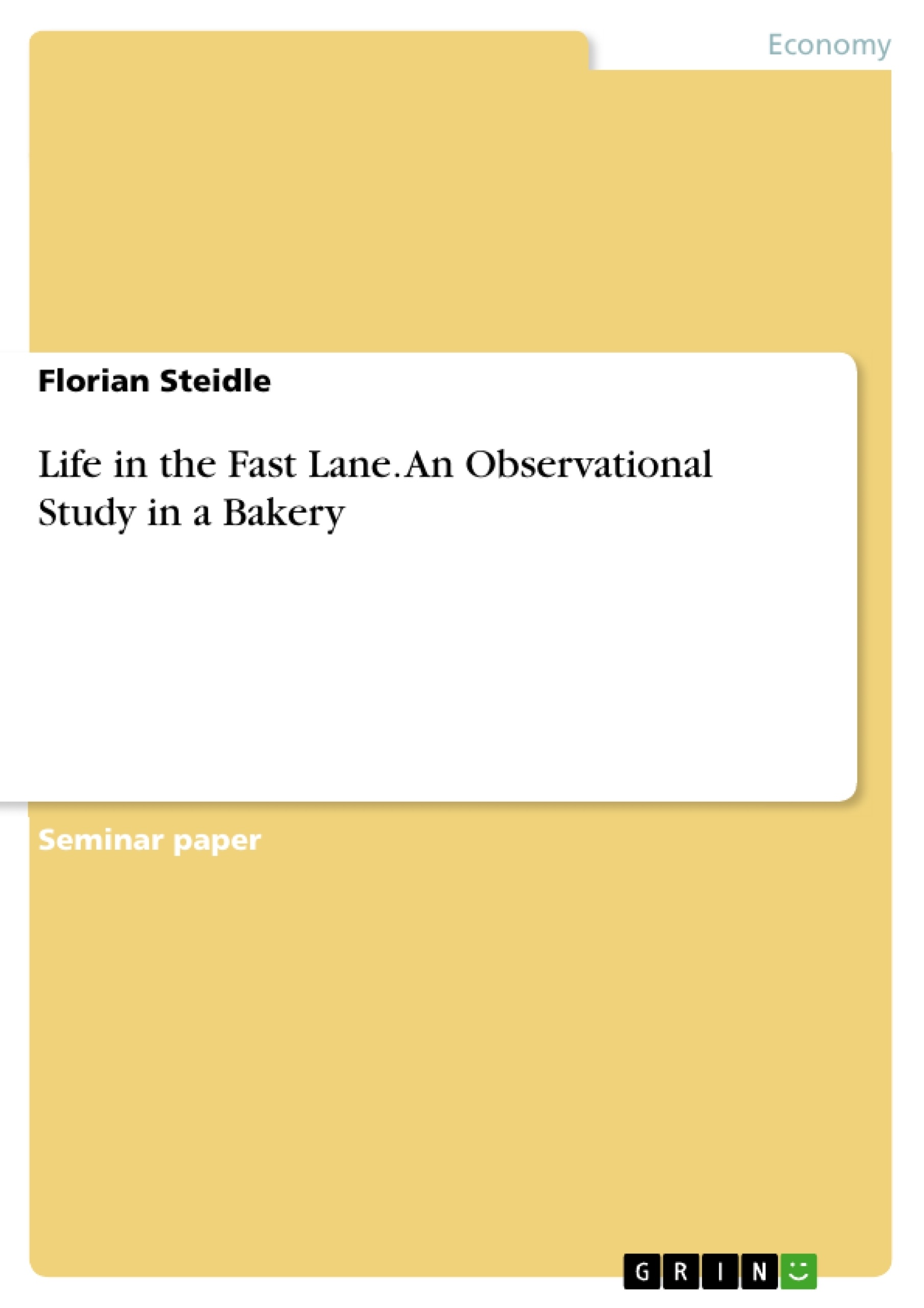This paper describes a detailed, qualitative exploration of social behavior concerning interaction and communication on individuals of different age and gender on the basis of a hidden observation within a bakery in southern Germany.
The existing literature states a drastically change in values regarding diverse generations, which is consistent with the authors results. The first outstanding finding of the investigation was the generational difference in personal interaction between the customer and the cashier.
The second significant discovery was the different perception of time amongst younger and older individuals in the process of shopping at a bakery. This leads to the assumption that productivity and efficiency surpass the desire for social contact. Therefore, this finding provides an important contribution towards better understanding generational distinctions in behavior and the altered conception of time as a resource.
Inhaltsverzeichnis (Table of Contents)
- I. Introduction
- II. Data and Methods
- III. Summary of Findings
- IV. Discussion and Conclusion
- V. References
Zielsetzung und Themenschwerpunkte (Objectives and Key Themes)
This paper aims to explore how social behavior, particularly in terms of interaction and communication, varies among individuals of different age and gender within the context of a bakery in southern Germany. The study utilizes a hidden observation method to analyze these generational distinctions in shopping behavior.
- The impact of generational differences on customer-cashier interaction.
- The influence of time perception on shopping behavior among different age groups.
- The changing role of bakeries as social spaces in contemporary society.
- The influence of technology and acceleration on the pace of everyday life and social interaction.
- The relationship between time management, productivity, and social alienation in modern society.
Zusammenfassung der Kapitel (Chapter Summaries)
- I. Introduction: This chapter introduces the research topic, highlighting the lack of data on generational distinctions in bakery shopping behavior. It examines the historical shift from bakeries as social gathering places to spaces where individuals prioritize efficiency and productivity, emphasizing the impact of technological acceleration on the pace of life.
- II. Data and Methods: This section describes the methodology used in the study, including the setting, the observation process, and the researcher's role in ensuring a non-intrusive approach. The chapter outlines the specific aspects of customer behavior that were observed, focusing on customer-cashier interaction, queue behavior, and potential generational differences.
Schlüsselwörter (Keywords)
This study investigates the relationship between generational distinctions and social behavior in a bakery setting. Key themes include the impact of technology and acceleration on the pace of everyday life, time management, social interaction, and the evolving role of third places in modern society. The study examines customer-cashier interaction, queue behavior, and the influence of time perception on shopping behavior.
- Citation du texte
- Florian Steidle (Auteur), 2016, Life in the Fast Lane. An Observational Study in a Bakery, Munich, GRIN Verlag, https://www.grin.com/document/318740



